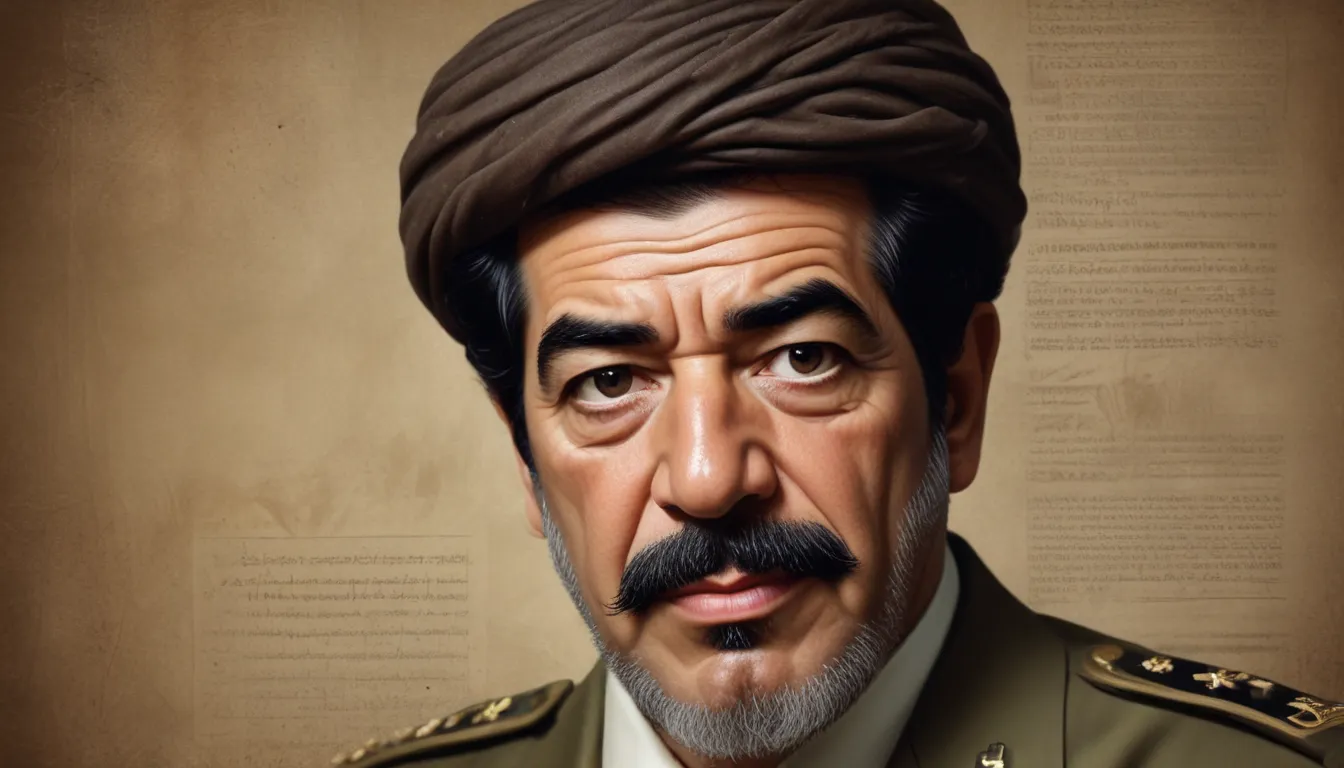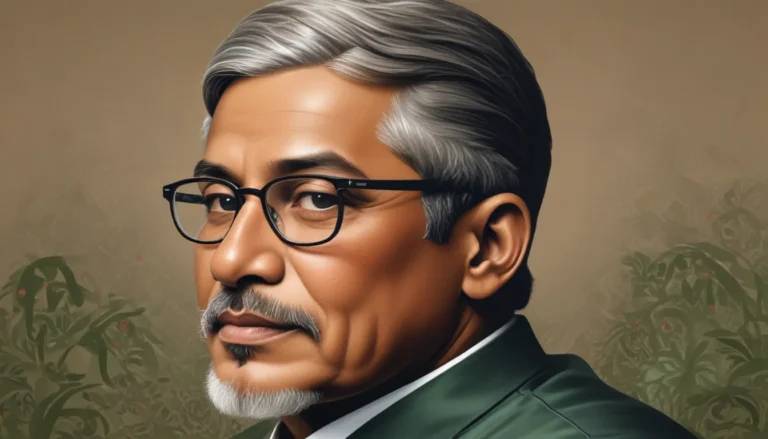The images in our articles may not match the content exactly. They are used to grab your attention, not to show the exact details in the text. The images complement the text but do not replace it.
Saddam Hussein, the enigmatic former dictator of Iraq, left an indelible mark on modern history with his brutal regime and controversial actions. In this article, we will explore 17 astonishing facts about Saddam Hussein, shedding light on the complexities of his character and the impact of his rule. From his rise to power and manipulation of the Iraqi government to his involvement in international conflicts and the atrocities committed under his regime, these facts will provide a deeper understanding of one of the most infamous leaders of the 20th century. Get ready to be amazed and intrigued as we uncover the surprising truths behind Saddam Hussein’s life.
The Reign of Iron and Intrigue
-
Saddam Hussein served as the President of Iraq for over two decades, from 1979 until his downfall. He held an iron grip on power, ruling the country with an authoritarian regime that sparked both admiration and fear among the population.
-
The Iraq-Iran War, which lasted from 1980 to 1988, was initiated by Saddam Hussein, resulting in significant casualties and strained diplomatic relations between the two nations. His aggressive actions during this conflict showcased his willingness to engage in military confrontations to further his political agenda.
-
In a move that shocked the international community, Saddam Hussein ordered the invasion of Kuwait in 1990, leading to the Gulf War. The subsequent coalition of countries drove Iraqi forces out of Kuwait, highlighting Saddam Hussein’s ambitious and controversial foreign policy decisions.
The Dark Side of Power
-
Under Saddam Hussein’s regime, human rights abuses were rampant, with reports of torture, mass killings, and chemical attacks on civilian populations emerging. His brutal treatment of political opponents, ethnic minorities, and dissidents highlighted the extent of his disregard for basic human rights.
-
Following the U.S.-led invasion of Iraq in 2003, Saddam Hussein was captured by American forces after going into hiding. His capture marked the beginning of his downfall and eventual trial for numerous crimes, including genocide and crimes against humanity.
-
Despite his reputation for brutality, Saddam Hussein had a creative side and wrote several novels during his time in power. These novels often depicted himself as a heroic figure and served as a form of propaganda to solidify his image as a powerful leader.
A Legacy of Power and Excess
-
Saddam Hussein spared no expense in constructing lavish palaces and monuments across Iraq, showcasing his desire for grandeur and power. His extravagant lifestyle was in stark contrast to the harsh realities faced by many Iraqis under his rule.
-
Despite being driven out of Kuwait by a coalition of international forces, Saddam Hussein declared victory over the United States, further solidifying his reputation as a delusional dictator. This proclamation highlighted his ability to manipulate perceptions and control narratives.
-
Saddam Hussein’s reign was marked by a complex religious divide, with him being a Sunni Muslim ruling over a predominantly Shia population in Iraq. This religious dynamic played a significant role in shaping the political landscape of the region during his rule.
The Shadow of Fear and Control
-
Under his regime, Saddam Hussein established an extensive network of secret police known as the Mukhabarat, responsible for monitoring and suppressing any opposition or dissent within the country. This secret police force instilled fear and maintained control over the population.
-
Throughout his rule, Saddam Hussein faced numerous assassination attempts orchestrated by both internal and external enemies. His survival against these threats further fueled his perception of invincibility and reinforced his iron grip on power.
-
Saddam Hussein was known for donning elaborate military uniforms adorned with symbols of power, projecting an image of strength and authority to the public. This theatrical display of military prowess aimed to reinforce his status as a formidable leader.
The Aftermath and Reflections
- Saddam Hussein’s legacy continues to shape Iraq’s political, social, and economic landscape, with the scars of his regime still felt today as the country strives to rebuild and heal. The impact of his rule serves as a stark reminder of the consequences of unchecked authoritarianism.
In conclusion, Saddam Hussein was a complex and influential figure in modern history, whose actions continue to captivate and intrigue people around the world. By examining his life and the consequences of his rule, we can gain valuable insights into the complexities of power, leadership, and the consequences of authoritarianism. As Iraq moves forward, it is essential to learn from the past and strive for a more peaceful and just world.
FAQs
Q: How did Saddam Hussein rise to power?
A: Saddam Hussein rose to power in Iraq through a combination of political maneuvering and military force. He joined the Ba’ath Party and gradually climbed the ranks, eventually becoming the Vice President of Iraq in 1968 before assuming the presidency in 1979 through a coup.
Q: What were some of Saddam Hussein’s most notorious acts of brutality?
A: Saddam Hussein’s regime was marked by numerous brutal acts, including the gassing of thousands of Kurds in Halabja in 1988, the invasion of Kuwait in 1990, and the suppression of uprisings within Iraq, resulting in tens of thousands of deaths.
Q: How did Saddam Hussein maintain his grip on power?
A: Saddam Hussein maintained power through fear, repression, and control. He established a totalitarian regime where dissent was swiftly crushed, and loyalty was enforced through surveillance and brutal punishments. Cultivating a personality cult and controlling the media further solidified his control.
Q: What led to Saddam Hussein’s downfall?
A: Saddam Hussein’s downfall was precipitated by the U.S.-led invasion of Iraq in 2003, aimed at removing him from power due to alleged possession of weapons of mass destruction. Following his capture, trial, and execution in 2006, his regime came to an end.
Q: What is Saddam Hussein’s legacy in Iraq?
A: Saddam Hussein’s legacy in Iraq is one of devastation, division, and instability. His rule resulted in hundreds of thousands of deaths, millions displaced, and sectarian tensions exacerbated. The aftermath of his regime continues to impact Iraq’s political landscape.
Explore more captivating facts about world leaders by reading our articles on Nouri Al-Maliki and dive into the meaning behind the Chinese zodiac sign, the Year of the Ox, for intriguing insights into personality traits and fortunes. Join us in our commitment to providing trustworthy and engaging content that is meticulously reviewed for accuracy and authenticity to ensure a valuable learning experience. Trust in our dedication to delivering high-quality information as you delve into diverse topics and expand your knowledge.






